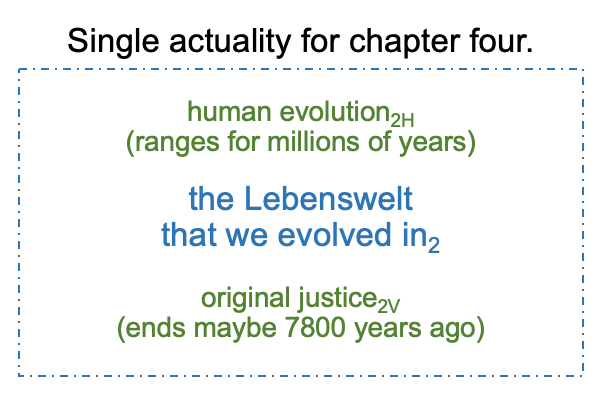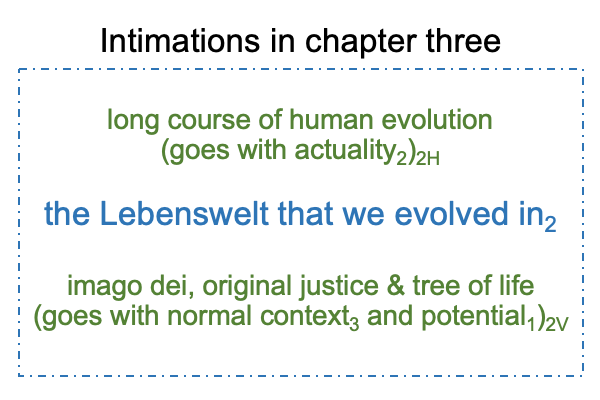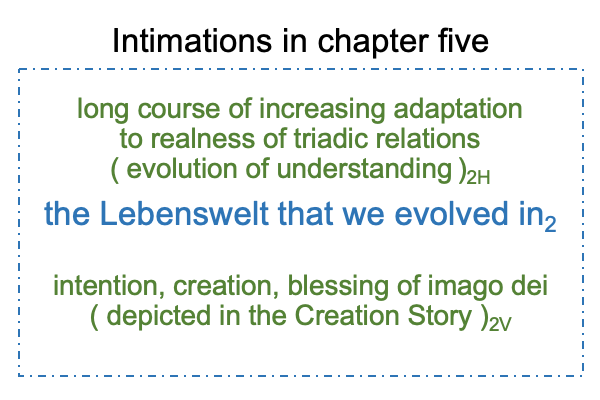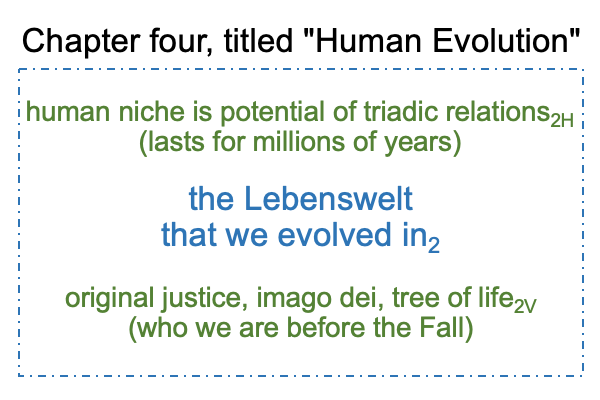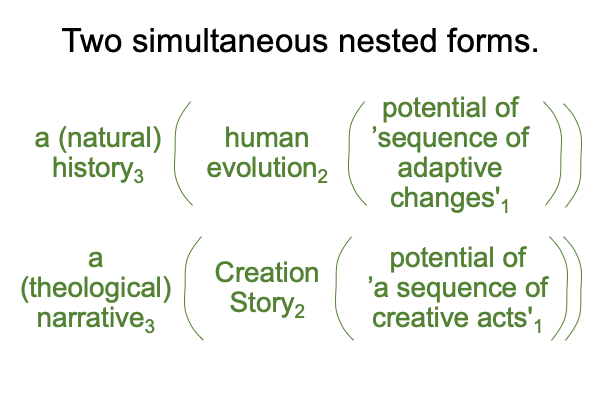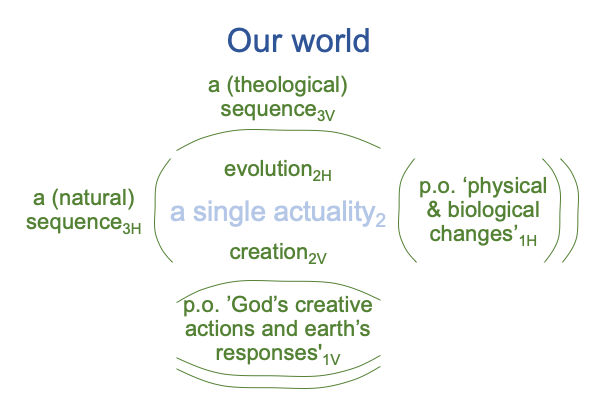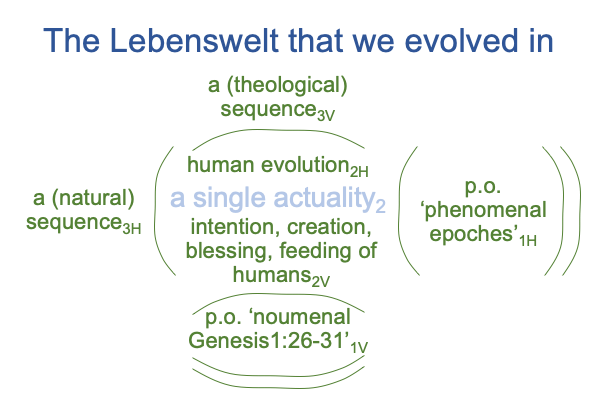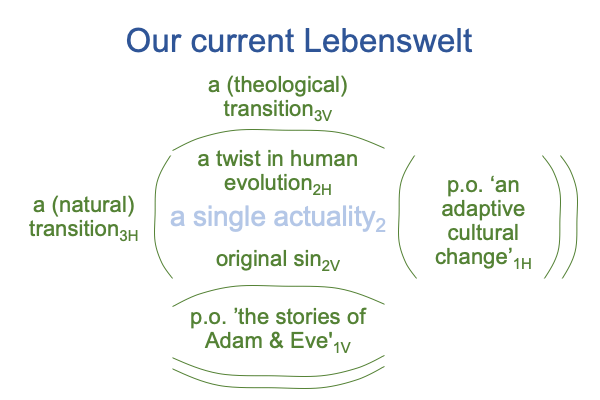Looking at Loren Haarsma’s Book (2021) “When Did Sin Begin” (Part 4 of 21)
0024 The first singularity2H is a hypothesis in human evolution2H.
The hypothesis explains why our current Lebenswelt is not the same as the Lebenswelt that we evolved in.
The hypothesis pertains to the start of our current Lebenswelt.
The hypothesis is plainly stated in The First Singularity and Its Fairy Tale Trace, available at smashwords and other e-book venues.
The hypothesis2H is dramatically portrayed, in tandem with originating sin2V, in the fiction, An Archaeology of the Fall.
This produces a balanced intersection.
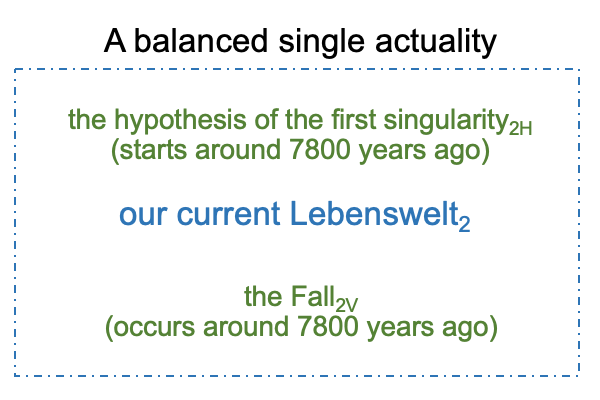
0025 With this in mind, I digress, in order to discuss two complementarities between the contributing actualities (2H and 2V).
0026 The first complementarity matches the construction of what is in the Positivist’s judgment, as developed in Comments on Jacques Maritain’s Book (1935) Natural Philosophy. What is presents itself as an actuality, composed of two contiguous real elements, characteristic of Peirce’s category of secondness. But, this presentation is an illusion, because the two elements are really the same thing, regarded from two different vantage points.
The real elements are a noumenon (the thing itself) and its phenomena (the observable and measurable facets of the noumenon). According to Kant, a noumenon cannot be objectified as its phenomena. So, the contiguity is [cannot be objectified as].
The two contributing actualities complement one another in the following manner.
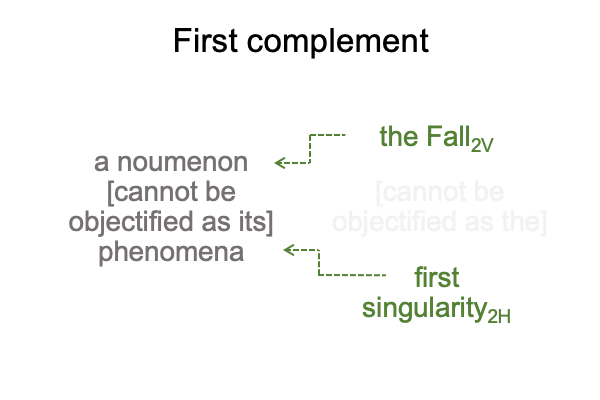
The Fall is like a noumenon. The first singularity models its corresponding phenomena.
0027 The second complementarity matches the distinction between primary and secondary causation, which plays a role in Comments on Armand Maurer’s Essay (2004) “Darwin, Thomists and Secondary Causality” (see July 2020 of Razie Mah’s blog).
Secondary causation describes what goes on in the Peirce’s category of secondness, the realm of actuality2. Primary causation describes what goes on in Peirce’s categories of thirdness and firstness, the realms of normal context3 and potential1.
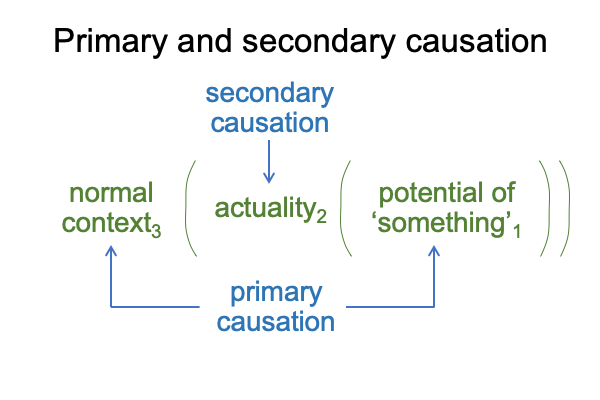
The two contributing actualities complement one another as follows.
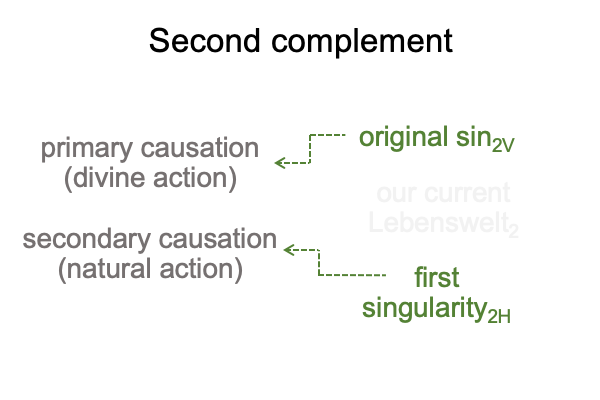
0029 This digression into the complementarity between the two contributing actualities reinforces the idea that they should balance.
In chapter four, Haarsma discusses human evolution2H, as configured before the hypothesis of the first singularity. Indeed, he does not place any importance to the start of civilization, which is potentiated by the first singularity.
Does he realize that almost all of human evolution predates the stories of Adam and Eve?
I wonder.
Plus, I chuckle.
0030 Why?
Saint Thomas Aquinas, the great medieval philosopher, argues that original sin is the lack of original justice.
So, the long period of human evolution2H is joined to original justice2H in the single actuality2 of the Lebenswelt that we evolved in.
Here is a picture.
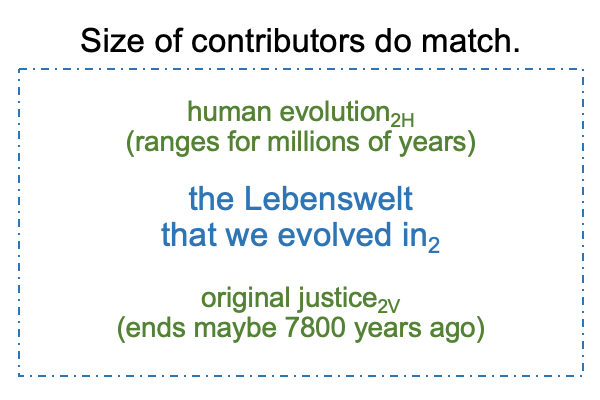
0031 Wow. The size of the contributions match.
Plus, just as original sin2V asks theorists in modern Anthropology about a recent (and immaterial) natural transition in human evolution2H, which turns out to be the hypothesis of the first singularity2H, original justice2V challenges theorists in modern Anthropology concerning the nature of the ultimate human niche2H.
0032 At present, modern Anthropology has not confronted the concept of an ultimate niche in human evolution, now elucidated in the e-masterwork, The Human Niche. The ultimate human niche is not defined by material conditions. It is defined by an immaterial condition: The realness of triadic relations.
0033 The modern scientific community follows a rule: Actuality is all there is. Models are built from observations and measurements of material actualities. These models are couched in various disciplinary languages. In the empirio-schematic judgment, disciplinary language brings mathematic and mechanical models into relation with observations and measurements of phenomena.
0034 The problem?
Material actuality is not all there is.
0035 This point is obvious in the category-based nested form, derived from the semiotics-friendly philosophy of Charles Peirce. The category-based nested form manifests the realness of triadic relations.
In the nested form, a normal context3 bring an actuality2 into relation with the possibility of ‘something’1. The subscripts refer to Peirce’s categories of thirdness, secondness and firstness.
Material actuality2 is real.
Immaterial normal contexts3 and potentials1 are also real.
But, don’t tell that to modern anthropologists.
As soon as the hear, they will become “postmodern”.
0036 When a human encounters an actuality, the human does not understand. The human can observe and measure the phenomena associated with the actuality. The human may model these observations and measurements. The human may discuss the model using well-defined disciplinary language. But, understanding is not modeling.
Understanding is a triadic relation. Modeling is a dyadic formulation.
0037 Understanding concerns the noumenon, the thing itself. Actuality2 demands a normal context3 and potential1. Figuring out the normal context3 and potential1 leads to understanding.
Humans evolve to understand. Modeling things is only part of understanding.

